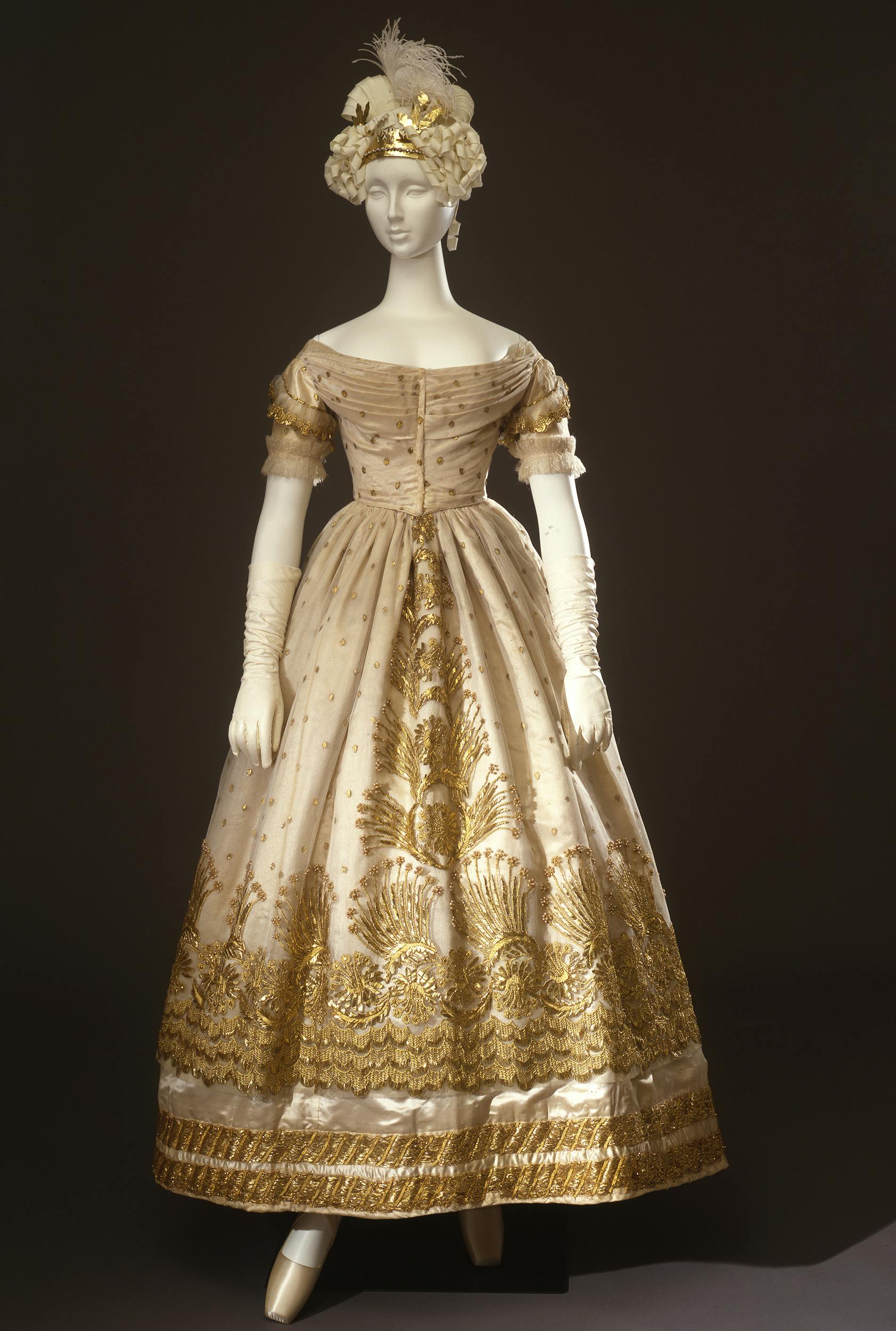Gala dress
Italian production
This important gala dress belonged to Marquise Marianna Venturi Garzoni, who became the wife of Marquis Carlo Ginori Lisci in 1821. The colour and ornaments of the dress still refer to the fashion of the Empire period, which drew its decorative repertoire from classical sculpture and architecture, but the design of the dress had already begun to differentiate from the absolute verticality of the early 19th century fashion, thus showing the first signs of the trend that would lead women's fashion to progressively enlarge its volumes up to the colossal crinoline skirts of the 1860s. The waistline is still high but no longer below the breast, while the skirt shows quite some volume, which perhaps was originally supported by a cordoned petticoat, i.e. stiffened with cords sewn into the fabric. All these elements allow to date the dress back to the 1820s. In addition, the overall sumptuousness of the garment, in particular the extensive gold thread embroidery, possibly of French manufacture, suggests a ceremonial use of the dress, which presumably traces it back to the role of Court Lady that the marquise held in 1823.
The gown is made of ivory silk satin covered with machine-made tulle of the same colour, ending with a shorter scalloped hem on the skirt. The tulle is embroidered in laminated gold, a yarn obtained by thinning the gold to leaf and then by cutting it to create long, thin strips. The embroidery punctuates the surface with small mouches, “flies”, scattered all over the tulle, while in the centre front, starting from the waistline, it draws a large palmette motif with flowers dotted with beads, which descends to the high flounce of the hem, thus donating the dress a particular and very vivid luminosity. The gold embroidery is also present along the hem of the satin skirt, where it forms two parallel bands. The dress presents a wide boat neckline finished with horizontal pleats, short sleeves embellished with bobbin lace, and a hemline that leaves shoes and ankles visible. It is fastened at the centre back with metal hooks.
During the restoration, the delicate embroidered tulle was consolidated with a support, also made of resin-treated tulle, and covered with an additional layer of tulle that was secured with a needle and then removed in the parts covering the large embroidered areas.
Donation by the association Amici della Galleria del Costume, Florence.
Provenance Paolo Venturi Ginori Lisci, Florence.
Non-original accessories.
La Galleria del Costume/2, Centro Di, Firenze, 1986, p 24
